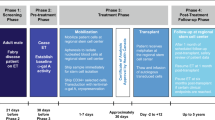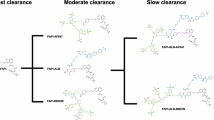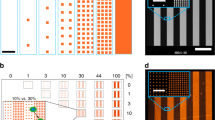Abstract
Peripheral neuropathy is one of the important manifestations of Fabry disease. Enzyme replacement therapy with presently available recombinant α-galactosidases does not always improve the Fabry neuropathy. But the reason has not been determined yet. We established a Schwann cell line from Fabry mice, characterized it, and then examined the uptake of α-galactosidase by cells and its effect on the degradation of accumulated substrate. The cells exhibited a distinct Schwann cell morphology and biochemical phenotype (α-Galactosidase activity was deficient, and numerous cytoplasmic inclusion bodies were present in the cells). A recombinant α-galactosidase added to the culture medium was incorporated into the cultured Fabry Schwann cells dose dependently. But the increase in cell-associated enzyme activity was less than that in the cases of human and mouse Fabry fibroblasts. The administration of a high dose of the enzyme improved the pathological changes in cells, although a low dose of it did not. Cellular uptake of the enzyme was strongly inhibited in the presence of mannose 6-phosphate. This suggests that the enzyme is incorporated via cation-independent mannose 6-phosphate receptors in Schwann cells. The low expression of cation-independent mannose 6-phosphate receptors in Schwann cells must be one of the reasons their uptake of the present enzymes was low. The administration of a high dose of the enzyme or the development of an enzyme containing many mannose 6-phosphate residues is required to improve Fabry neuropathy.
Similar content being viewed by others
Log in or create a free account to read this content
Gain free access to this article, as well as selected content from this journal and more on nature.com
or
Abbreviations
- ERT:
-
enzyme replacement therapy
- PCR:
-
polymerase chain reaction
- RT:
-
reverse transcription
- P0:
-
peripheral myelin protein-0
- GAP43:
-
growth-associated protein 43
- CGT:
-
UDP-galactose ceramide galactosyltransferase
- MAL:
-
myelin and lymphocyte protein
- GAPDH:
-
glyceraldehyde 3-phosphate dehydrogenase
- GFAP:
-
glial fibrillary acidic protein
- M6P:
-
mannose 6-phosphate
- PBS:
-
phosphate-buffered saline
- C-I M6PR:
-
cation-independent mannose 6-phosphate receptor
References
Dahms NM, Lobel P, Kornfeld S (1989) Mannose 6-phosphate receptor and lysosomal enzyme targeting. J Biol Chem 264:12115–12118
Desnick RJ, Ioannou YA, Eng CM (2001) α-Galactosidase A deficiency: Fabry disease. In: Scriver CR, Beaudet AL, Sly WS, Valle D (eds) The metabolic and molecular bases of inherited disease, 8th edn. McGraw-Hill, New York, pp 3733–3774
Desnick RJ, Brady RO, Barranger J, Collins AJ, Germain DP, Goldman M, Grabowski G, Packman S, Wilcox WR (2003) Fabry disease, an under-recognized multisystemic disorder: expert recommendations for diagnosis, management, and enzyme replacement therapy. Ann Intern Med 138:338–346
Eng CM, Banikzzemi M, Gordon RE, Goldman M, Phelps R, Kim L, Gass A, Winston J, Dikman S, Fallon JT, Brodie S, Stacy CB, Mehta D, Parsons R, Norton K, O’Callaghan M, Desnick RJ (2001a) A phase 1/2 clinical trial of enzyme replacement in Fabry disease: pharmacokinetic, substrate clearance, and safety studies. Am J Hum Genet 68:711–722
Eng CM, Guffon N, Wilcox WR, Germain DP, Lee P, Waldek S, Caplan L, Linthorst GE, Desnick RJ (2001b) Safety and efficacy of recombinant human α-galactosidase A replacement therapy in Fabry’s disease. N Engl J Med 345:9–16
Hilz MJ, Brys M, Marthol H, Stemper B, Dütsch M (2004) Enzyme replacement therapy improves function of C-, Aδ-, and Aβ-nerve fibers in Fabry neuropathy. Neurology 62:1066–1079
Kanzaki T, Yokota M, Mizuno N, Matsumoto Y, Hirabayashi Y (1989) Novel lysosomal glycoaminoacid storage disease with angiokeratoma corporis diffusum. Lancet 1:875–877
Lee K, Jin X, Zhang K, Copertino L, Andrews L, Baker-Malcom J, Gegan L, Qiu H, Seiger K, Barngrover D, McPherson JM, Edmunds T (2003) A biochemical and pharmacological comparison of enzyme replacement therapies for the glycolipid storage disorder Fabry disease. Glycobiology 13:305–313
Mayes JS, Scheerer JB, Sifers RN, Donaldson ML (1981) Differential assay for lysosomal α-galactosidase in human tissues and its application to Fabry’s disease. Clin Chim Acta 112:247–251
Oshima T, Murray GJ, Swaim WD, Longenecker G, Quirk JM, Cardarelli CO, Sugimoto Y, Pastan I, Gottesman MM, Brady RO, Kulkarni AB (1997) α-Galactosidase A deficient mice: a model of Fabry disease. Proc Natl Acad Sci USA 94:2540–2544
Sakuraba H, Murata-Ohsawa M, Kawashima I, Tajima Y, Kotani M, Oshima T, Chiba Y, Takashiba M, Jigami Y, Fukushige T, Kanzaki T, Itoh K (2006a) Comparison of the effects of agalsidase alfa and agalsidase beta on cultured human Fabry fibroblasts and Fabry mice. J Hum Genet 51:180–188
Sakuraba H, Chiba Y, Kotani M, Kawashima I, Ohsawa M, Tajima Y, Takaoka Y, Jigami Y, Takahashi H, Hirai Y, Shimada T, Hashimoto Y, Ishii K, Kobayashi T, Watabe K, Fukushige T, Kanzaki T (2006b) Corrective effect on Fabry mice of yeast recombinant human α-galactosidase with N-linked sugar chains suitable for lysosomal delivery. J Hum Genet 51:341–352
Schiffmann R, Murray GJ, Treco D, Daniel P, Sellos-Moura M, Myers M, Quirk JM, Zirzow GC, Borowski M, Loveday K, Anderson T, Gillespie F, Cliver KL, Jeffries NO, Doo E, Liang TJ, Kreps C, Gunter K, Frei K, Crutchfield K, Selden RF, Brady RO (2000) Infusion of α-galactosidase A reduces tissue globotriaosylceramide storage in patients with Fabry disease. Proc Natl Acad Sci USA 97:365–370
Schiffmann R, Rapkiewicz A, Abu-Asab M, Ries M, Askari H, Tsokos M, Quezado M (2006) Pathological findings in a patient with Fabry disease who died after 2.5 years of enzyme replacement. Virchows Arch 448:337–343
Tajima Y, Matsuzawa F, Aikawa S, Okumiya T, Yoshimizu M, Tsukimura T, Ikekita M, Tsujino S, Tsuji A, Edmunds T, Sakuraba H (2007) Structural and biochemical studies on Pompe disease and “pseudodeficiency of acid alpha-glucosidase”. J Hum Genet Epub, PMID: 17805474
Tong PY, Tollefsen SE, Kornfeld S (1988) The cation-independent mannose 6-phosphate receptor binds insulin-like growth factor II. J Biol Chem 263:2585–2588
Watabe K, Yamada M, Kawashima T, Kim SU (1990) Transfection and stable transformation of adult mouse Schwann cells with SV-40 large T antigen. J Neuropathol Exp Neurol 49:455–467
Watabe K, Fukuda T, Tanaka J, Honda H, Toyohara K, Sakai O (1995) Spontaneously immortalized adult mouse Schwann cells secrete autocrine and pancrine growth-promoting activities. J Neurosci Res 41:279–290
Watabe K, Ida H, Uehara K, Oyanagi K, Sakamoto T, Tanaka J, Garver WS, Miyawaki S, Ohno K, Eto Y (2001) Establishment and characterization of immortalized Schwann cells from murine model of Niemann-Pick disease type C (spm/spm). J Peripher Nerv Syst 6:85–94
Watabe K, Sakamoto T, Kawazoe Y, Michikawa M, Miyamoto K, Yamamura T, Saya H, Araki N (2003) Tissue culture methods to study neurological disorders: establishment of immortalized Schwann cells from murine disease models. Neuropathology 23:68–78
Acknowledgments
We wish to thank Drs. Ashok B. Kulkarni (Gene Targeting Faculty and Functional Genomics Unit, NIDCR, NIH) and Toshio Oshima (Laboratory for Development Neurology, Brain Science Institute, RIKEN) for providing us with the Fabry mice. This work was partly supported by the Japan Society for the Promotion of Science, the Ministry of Education, Science, Sports and Culture, the Ministry of Health, Labor and Welfare of Japan, the Japan Science and Technology Agency, and CREST. This work was partly supported by grants from the Japan Society for Promotion of Science, the Ministry of Education, Science, Sports and Culture of Japan, the Ministry of Health, Labor and Welfare of Japan, the Japan Science and Technology Agency, and CREST.
Author information
Authors and Affiliations
Corresponding author
Rights and permissions
About this article
Cite this article
Kawashima, I., Watabe, K., Tajima, Y. et al. Establishment of immortalized Schwann cells from Fabry mice and their low uptake of recombinant α-galactosidase. J Hum Genet 52, 1018–1025 (2007). https://doi.org/10.1007/s10038-007-0210-x
Received:
Accepted:
Published:
Issue date:
DOI: https://doi.org/10.1007/s10038-007-0210-x



